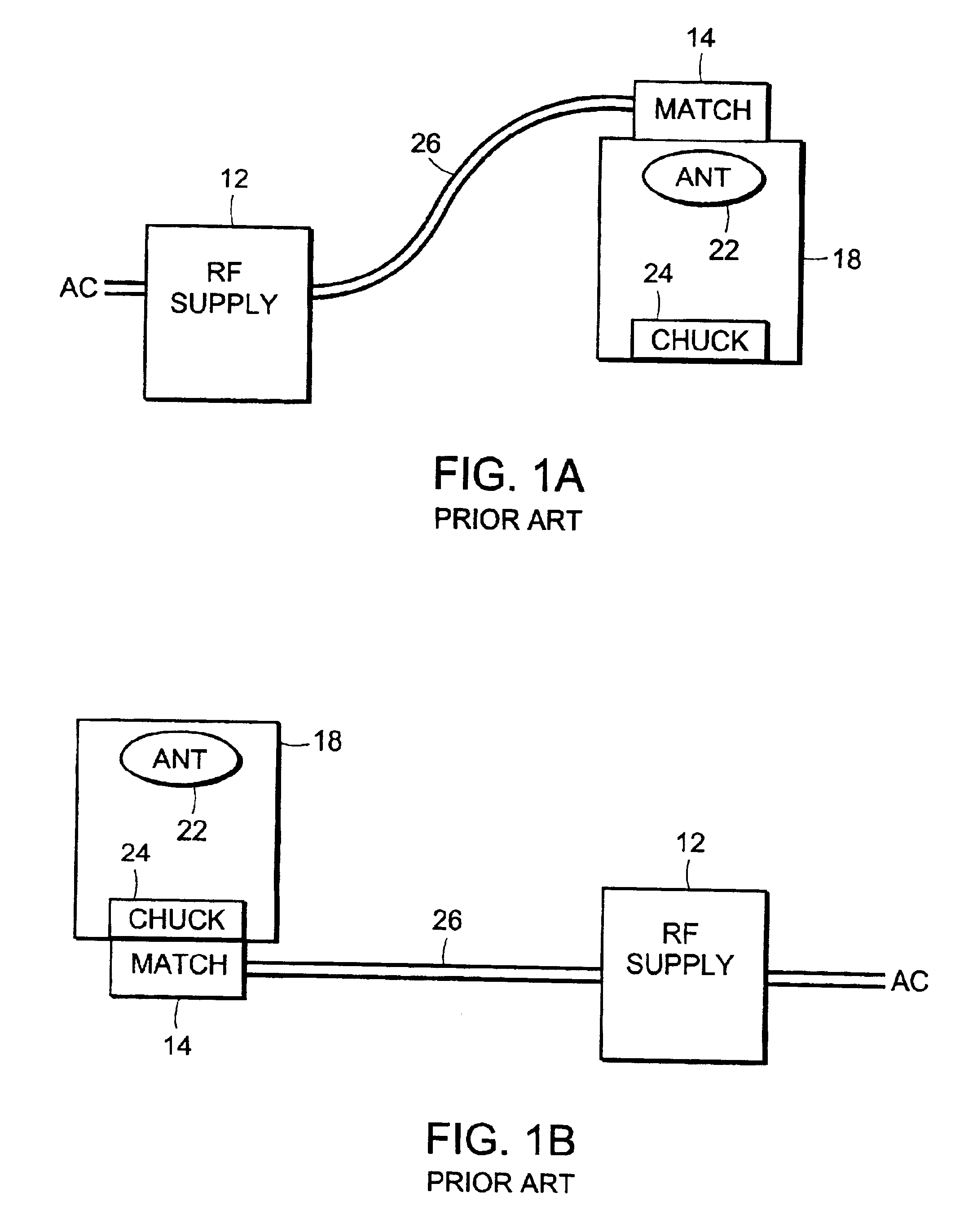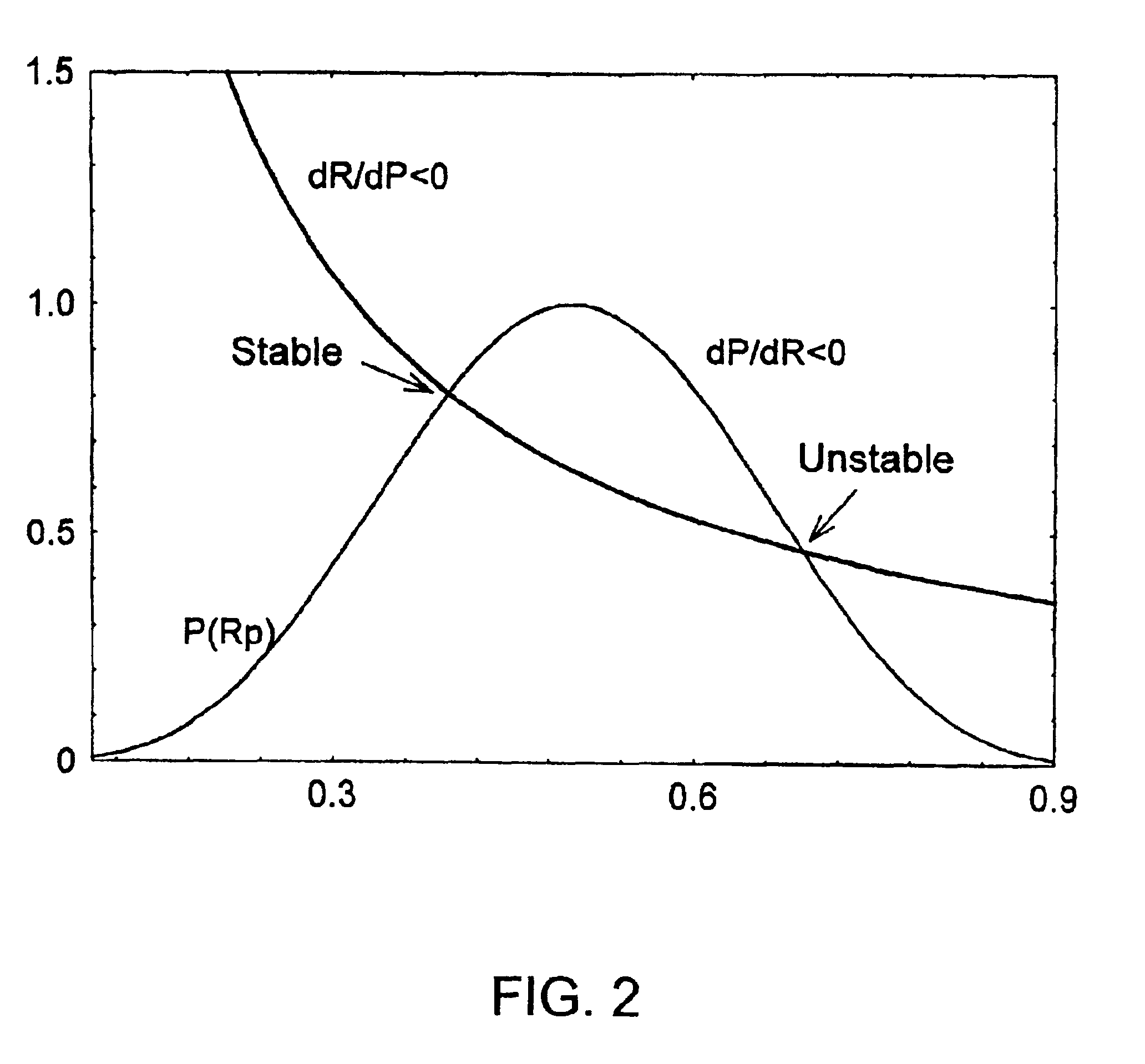RF power supply with integrated matching network
a technology of matching network and power supply, which is applied in the direction of multiple-port network, plasma technique, coating, etc., can solve the problems of mismatching impedance between the standard fifty-ohm output impedance of the rf generator and the input, high cost of these prior-art rf power supplies, and large fraction of the total system cost, etc., to achieve fast control, optimize efficiency, and eliminate the use of mechanical components
- Summary
- Abstract
- Description
- Claims
- Application Information
AI Technical Summary
Benefits of technology
Problems solved by technology
Method used
Image
Examples
Embodiment Construction
[0072]FIGS. 1a and 1b illustrate prior art plasma processing systems that includes a separate RF generator 12 and matching network 14. A plasma processing system includes an antenna 22, a chuck 24 for holding substrates to be processed and a process chamber 18. The matching network 14 is positioned proximate to the antenna 22 or the chuck 14, depending on the processing system configuration.
[0073]The RF generator 12 is positioned a significant distance away from the process chamber 18, where a plasma is created. RF cables 26 connect the output of the RF generator 12 to the input of the matching network 14. Other prior art plasma processing systems enclose the matching network 14 and RF generator 12 in the same enclosure in order to save space. The combined unit may be located either remote from the process chamber 18 or proximate to process chamber 18. The output of the matching network 14 is attached to an antenna 22 that is designed to create a plasma in the plasma source 16. Some...
PUM
| Property | Measurement | Unit |
|---|---|---|
| frequency | aaaaa | aaaaa |
| frequency | aaaaa | aaaaa |
| impedance | aaaaa | aaaaa |
Abstract
Description
Claims
Application Information
 Login to View More
Login to View More - R&D
- Intellectual Property
- Life Sciences
- Materials
- Tech Scout
- Unparalleled Data Quality
- Higher Quality Content
- 60% Fewer Hallucinations
Browse by: Latest US Patents, China's latest patents, Technical Efficacy Thesaurus, Application Domain, Technology Topic, Popular Technical Reports.
© 2025 PatSnap. All rights reserved.Legal|Privacy policy|Modern Slavery Act Transparency Statement|Sitemap|About US| Contact US: help@patsnap.com



